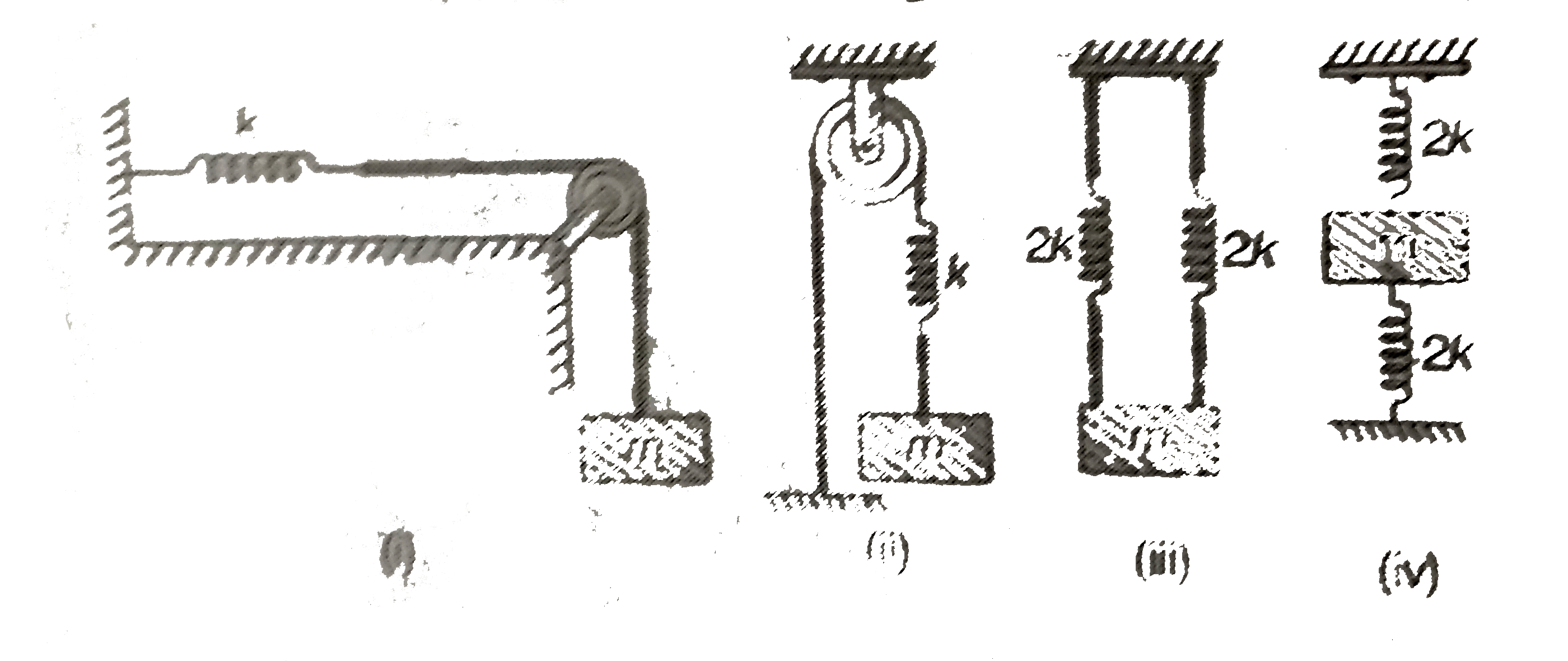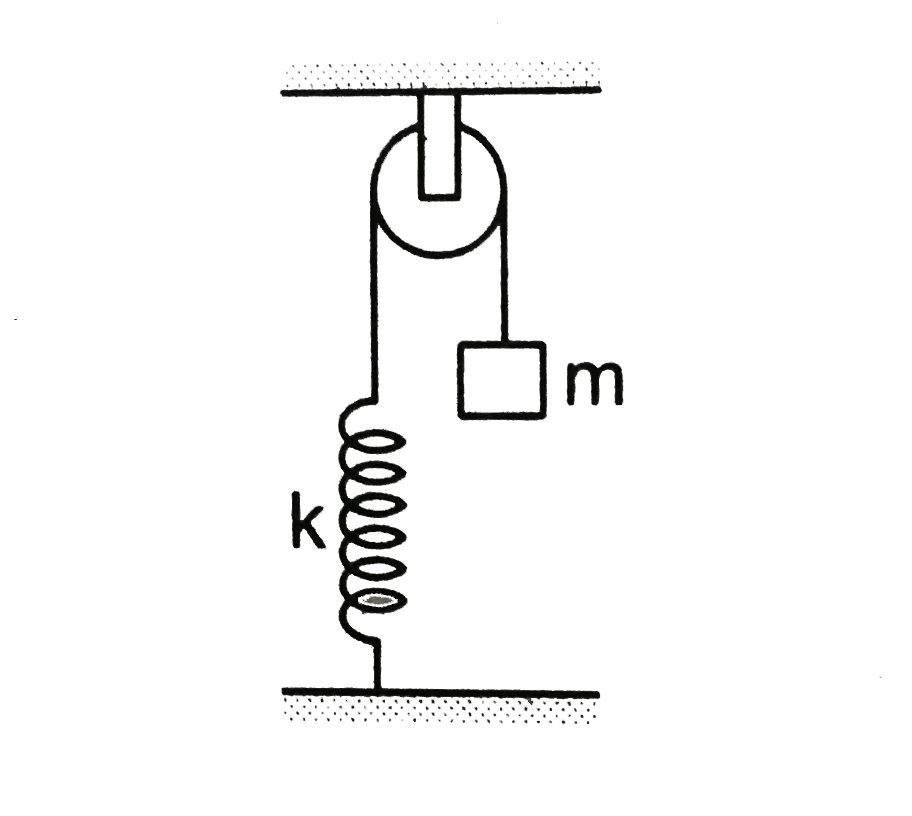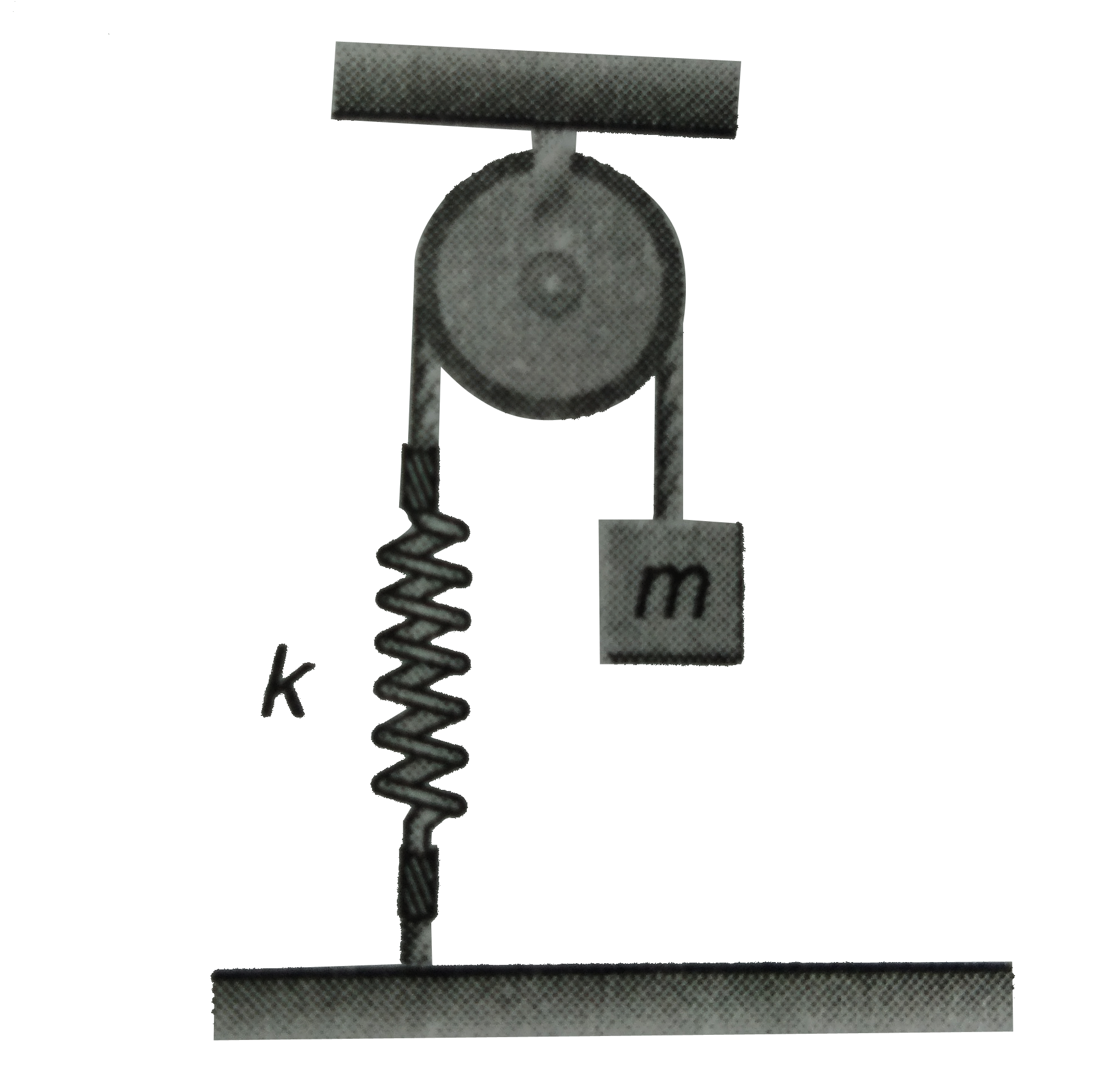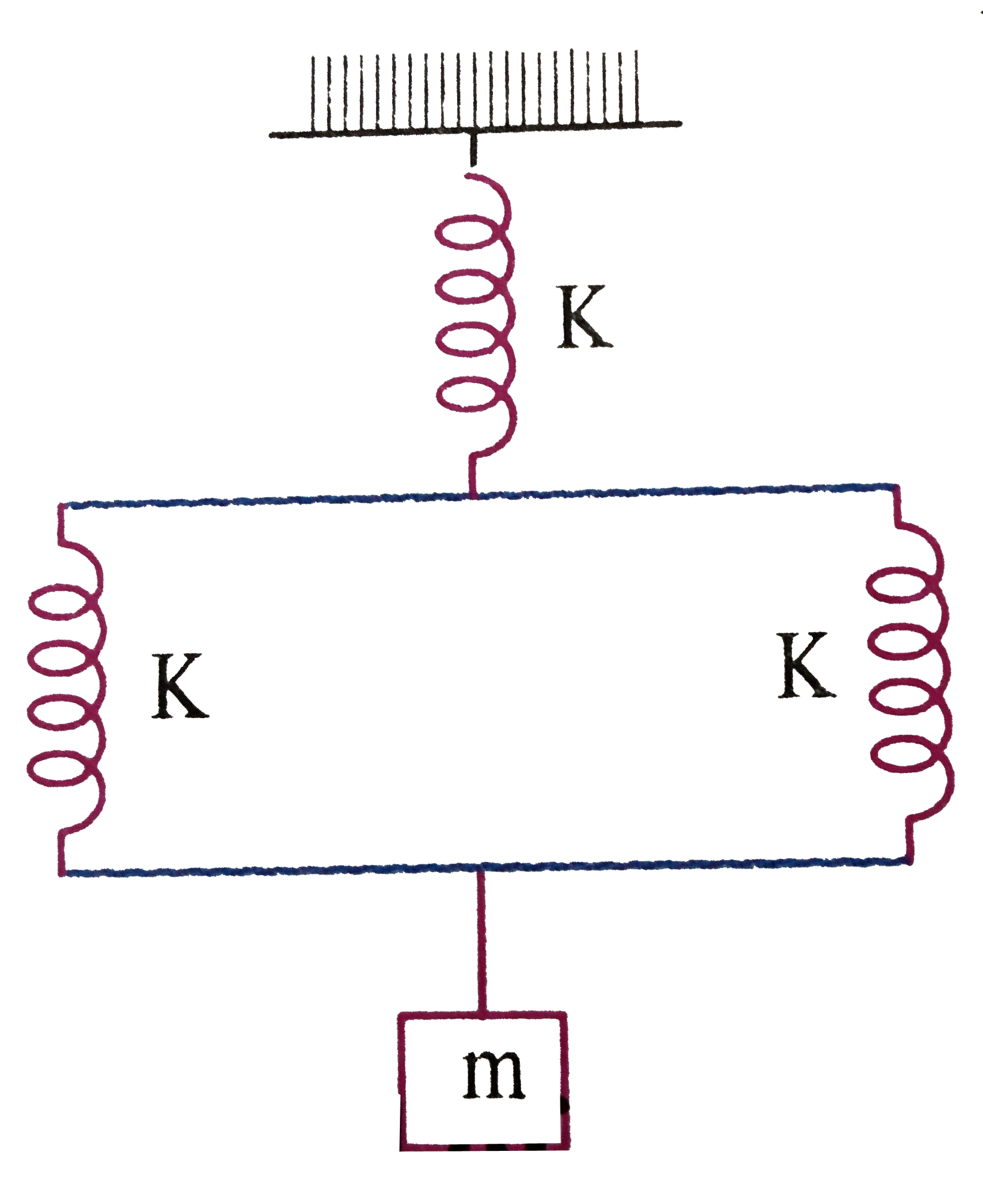A mass is suspended separately by two different springs in successive order then time period is t1 and t2 respectively. If it is connected by both spring as shown in figure then time period is t0, the correct relation is : -

t20=t21+t22
t20=t−21+t−22
t−10=t−11+t−12
t0=t1+t2
The correct Answer is:B
∵T=2π√mK⇒K∝1T2
In this case K=K1+K2
1t20=1t21+1t22⇒t20=t21+t22
Similar Questions
When a block of mass m is suspended separately by two different springs have time period t1 and t2. If same mass is connected to parallel combination of both springs, then its time period is given by :-
View SolutionA mass is suspended separately by two springs of spring constants k1 and k2 in successive order. The time periods of oscillations in the two cases are T1 and T2 respectively. If the same mass be suspended by connecting the two springs in parallel, (as shown in figure) then the time period of oscillations is T. The correct relations is

View SolutionA block of mass m is suspended by different springs of force constant shown in figure.

View SolutionA mass is suspended separately by two springs and the time periods in the two cases are T1 and T2. Now the same mass is connected in parallel (K=K1+K2) with the springs and the time is suppose TP. Similarly time period in series is TS, then find the relation between T1,T2 and TP in the first case and T1,T2 and TS in the second case.
View SolutionThe string the spring and the puley shown in figure are light. Find the time period of the mass m.

View SolutionThe string, spring and the pulley shown in figure are light. Find the time period of the mass m.

View SolutionA mass m is suspended from the two coupled springs connected in series. The force constant for springs are k1 and k2. The time period of the suspended mass will be
View SolutionA body of mass m is suspended from three springs as shown in figure. If mass m is displaced slightly then time period of oscillation is

View SolutionA body of mass m has time period T1 with one spring and has time period T2 with another spring. If both the springs are connected in parallel and same mass is used, then new time period T is given as
View SolutionA mass is suspended at the end of a spring and performs SHM with a time period 3 seconds, while the time period f same mass wih other spring is 4 second. If that mass is connected with the combination of the two springs connected in series then time period of oscillator is
View Solution
